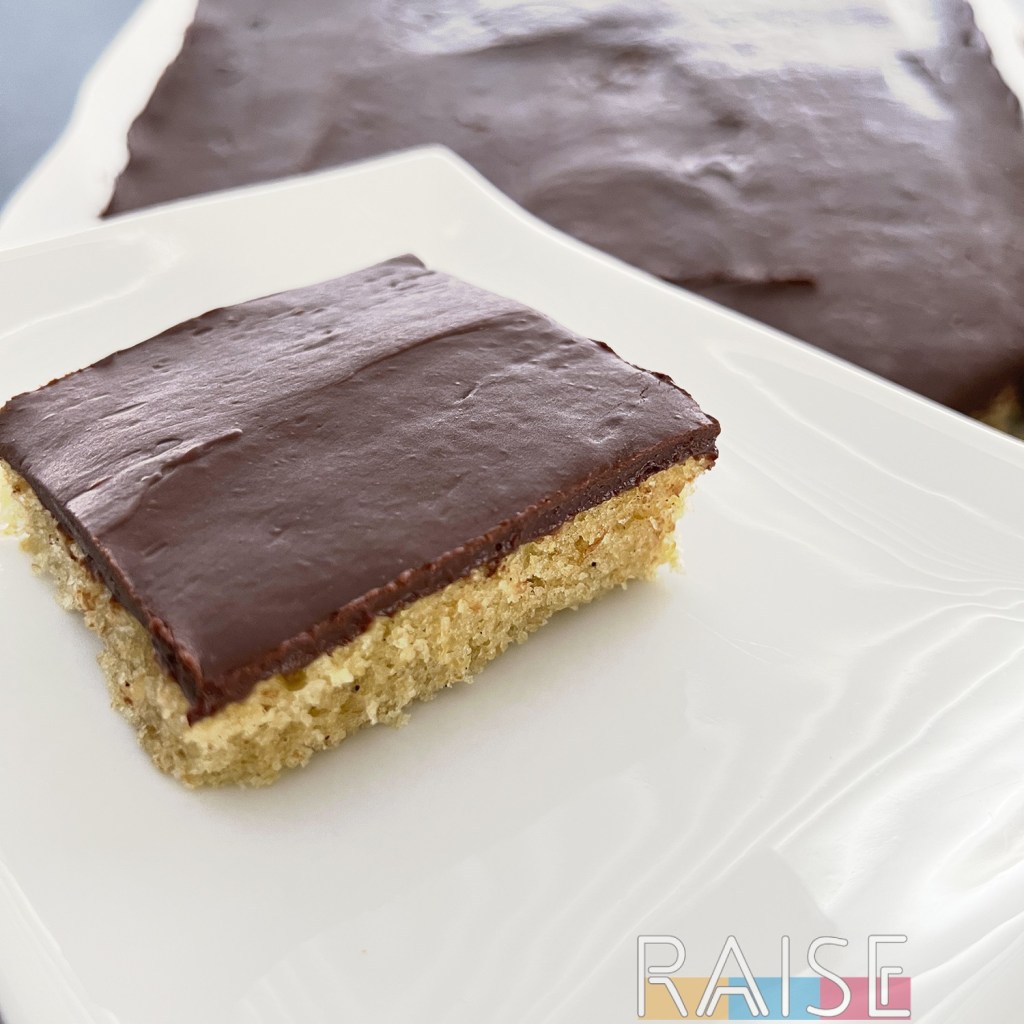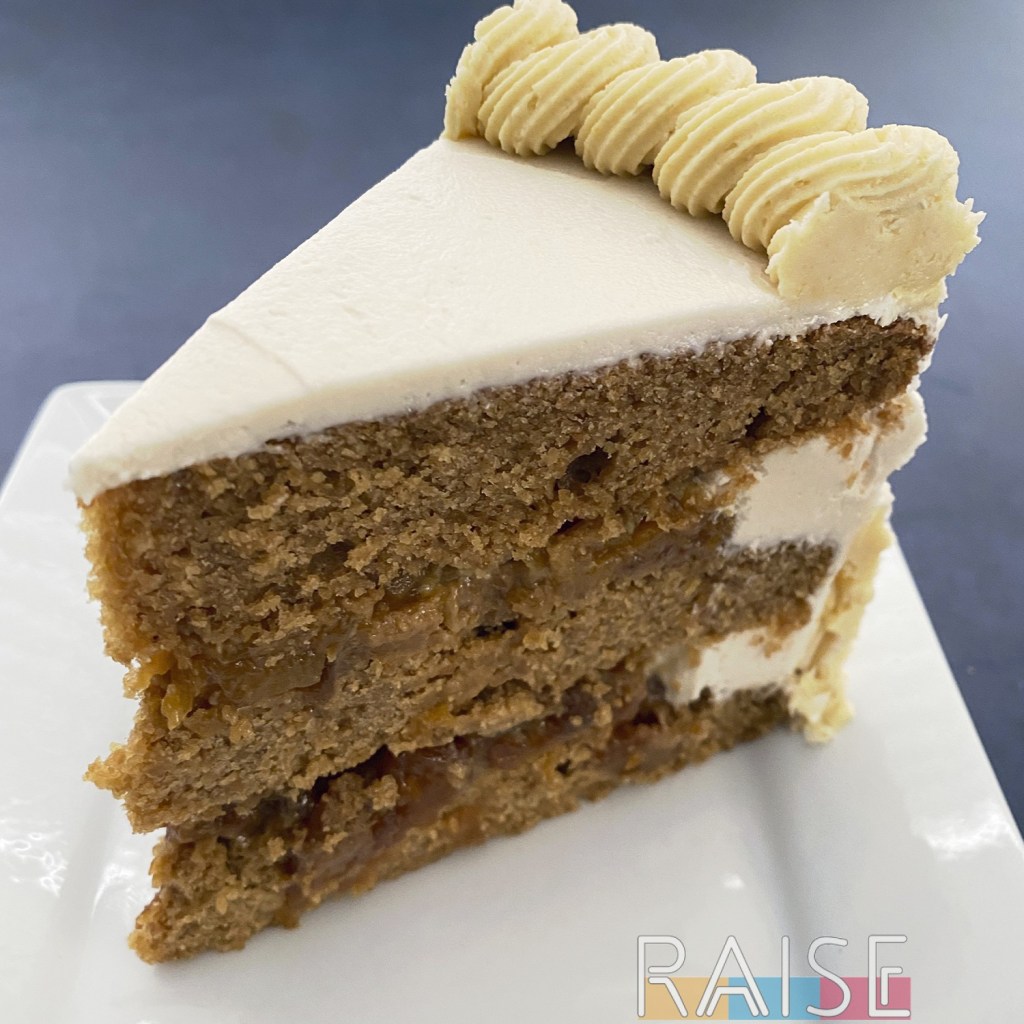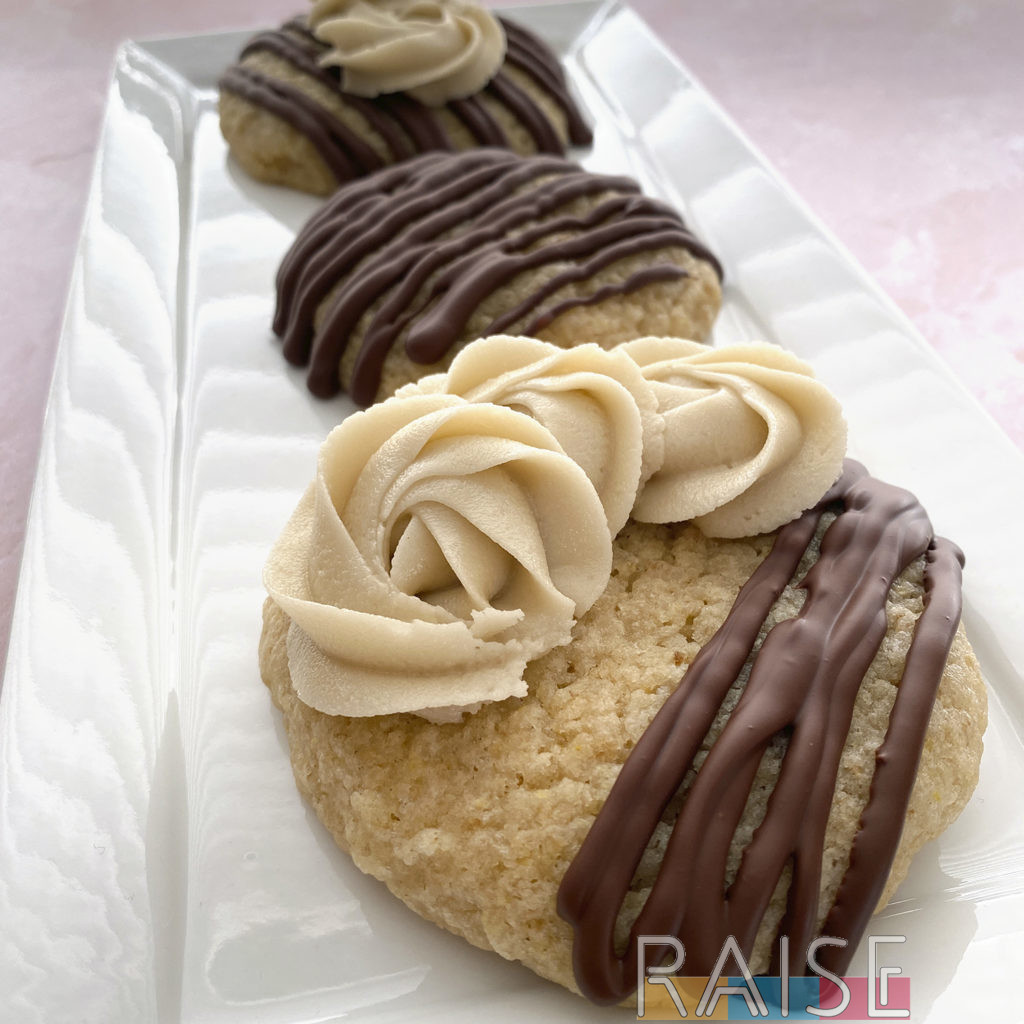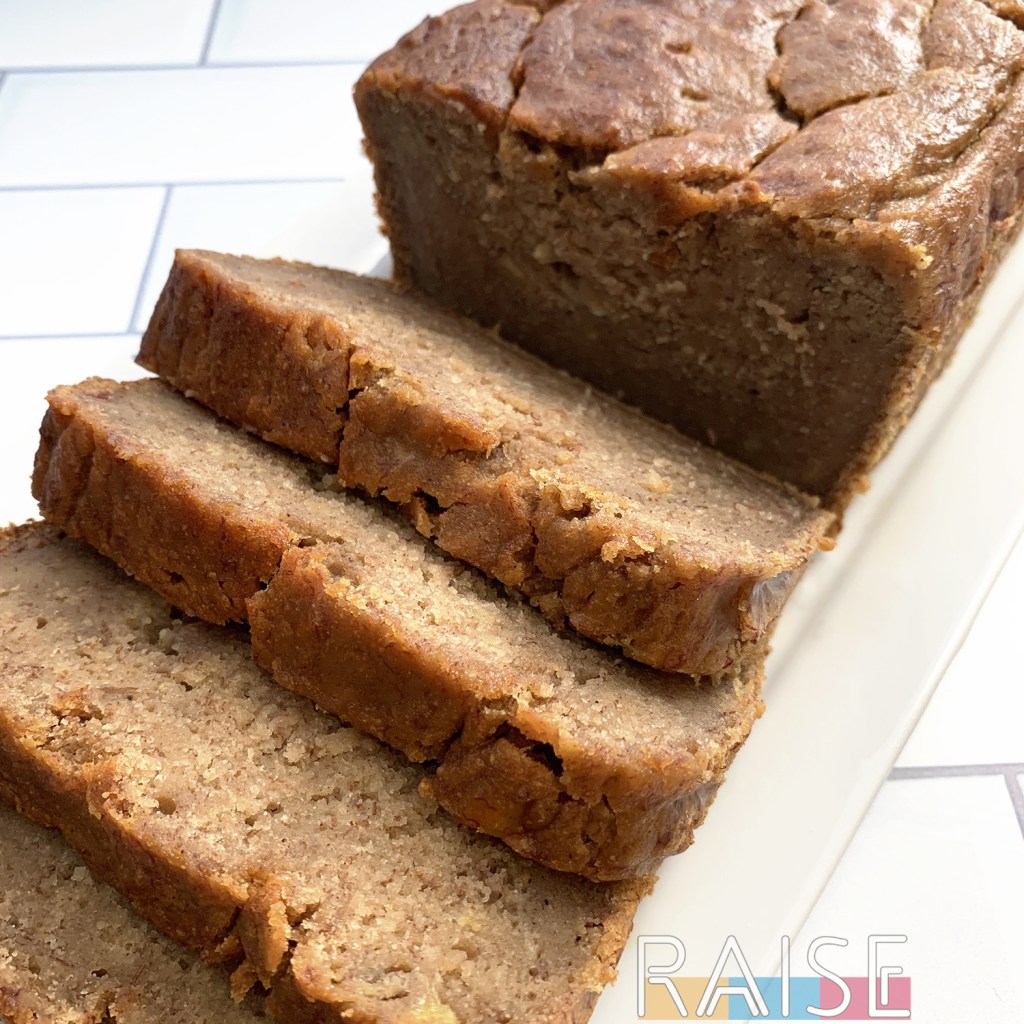Today, let’s take a look at aluminum free baking powder vs regular baking powder. This info may come in handy if you need a change in diet for medical reasons, or something is off in the taste of your baked goods (more on that later).
First, What Is Baking Powder?
Before we dive into the differences of aluminum free baking powder and regular baking powder, we need to know what baking powder actually is. Plus, knowing the ins and outs of the ingredients that you’re using will only make you a better baker.
Baking powder is a leavening agent and adds volume to baked goods (and cooked foods like pancakes). Baking powder also lightens the texture of your baked goods.
Without baking powder, items such as biscuits, cookies, and some breads would be more dense and flatter than you want. With gluten-free baking, density is already an issue, so it’s important to get your leavening right to prevent more problems. This is compounded if you’re gluten free and egg free, so make sure you’re following awesome recipes.
Baking powder is considered a complete leavening agent since it doesn’t need any special ingredients to do its job. On the other hand, baking soda is incomplete since it requires an acidic ingredient such as lemon juice to activate and work its magic.
How Does Baking Powder Work?
Baking powder works by a combination of four key elements:
- Alkaline Powder (such as baking soda)
- Acid Salt
- Neutral Starch
- Liquid (added to your recipe)
When your baking powder combines with the liquid, carbon dioxide is produced, and the gas is trapped in your dough, which causes the dough to rise. This type of leavening is considered a chemical reaction, and we call it a chemical leavener. The other two types of leavening agents are biological (yeast, natural fermentation) and vaporous (steam).
Fun fact: Most home cooks and even commercial bakeries will use baking powder as one of their dry ingredients, rather than use baking soda + an acid for leavening.
Ingredients In Baking Powder
Let’s take a look at the ingredients in the top six brands of baking powder. Each one is a little different, and I’ll highlight the standout feature for you.
Clabber Girl Double Acting Baking Powder: Corn Starch, Sodium Bicarbonate, Sodium Aluminum Sulfate, Monocalcium Phosphate
Standout Feature: This is one of many traditional baking powders sold nationwide that uses an aluminum-based acid to create the double acting rise.
Bob’s Red Mill Double Acting Baking Powder: Sodium Acid Pyrophosphate, Sodium Bicarbonate, Cornstarch, Monocalcium Phosphate
Standout Feature: Bob has made an awesome aluminum free baking powder that’s also double acting. There aren’t too many options like this one available sold nationwide.
Whole Foods 365 Aluminum Free Baking Powder: Cornstarch, Monocalcium Phosphate, Baking Soda
Standout Feature: This is a nice and simple, single acting baking powder that’s aluminum free.
Rumford Brand Baking Powder: Corn Starch, Sodium Bicarbonate, Monocalcium Phosphate
Standout Feature: One could argue that their long company history is a standout feature. Outside of that, the ingredients are identical to the ones used by Whole Foods, but you’ll notice the ingredients are in a different order. That reflects the different ratios of the ingredients.
Hain Featherweight Baking Powder: Monocalcium Phosphate, Potato Starch, Potassium Bicarbonate
Standout Feature: This is one of only two truly corn free baking powders sold nationwide, and for those with a corn allergy like myself, it’s a real Godsend. Additionally, this is a sodium free baking powder, which isn’t commonly found in grocery stores.
Otto’s Naturals Grain Free Baking Powder: Cassava Starch, Sodium Bicarbonate, Monocalcium Phosphate
Standout Feature: Whilst this a newer kid on the baking powder block, it’s one of only two truly corn free options. However, it goes a step further and it’s the only grain free baking powder sold nationwide right now. Otto’s has so much respect from me because they’re doing a lot to help a usually overlooked community of bakers who need very special ingredients.
You’ll notice that the top three common ingredients are corn starch, sodium bicarbonate (baking soda), and monocalcium phosphate. If for some reason you can’t have any of the baking powders I’ve listed, you can make baking powder at home. Here’s a recipe and more information on chemical leaveners.
What is Aluminum-Free Baking Powder
Aluminum free baking powder is baking powder that’s made without sodium aluminum phosphate (or sodium aluminum sulfate), a key ingredient in double acting baking powder. Some would argue that this is considered regular baking powder, whilst others would say that aluminum-free powder is “regular”. Either way, just know that aluminum compounds aren’t in aluminum free baking powder.
You’ll usually find aluminum based ingredients in double acting baking powder, however, Bob’s Red Mill has an aluminum free double acting baking powder available. In our modern times, a lot of people want to avoid aluminum in their diet, and many have shifted to aluminum free baking powder.
What are Double-Acting Powders
Double-acting baking powder stands out because it helps your baked goods rise twice. Remember the gas production I mentioned earlier? With double-acting baking powder, the key bonus ingredient is usually sodium aluminum sulfate. It’s special because it doesn’t release all of its gas in the initial combination of the wet and dry ingredients.
The SAS releases the first round of gas that helps your batter rise when you combine the wet and dry ingredients together (you’ll see bubbles forming). Then, once heated, a second round of gas erupts, and your goods get a second lift boost. This can be especially helpful if you’re a gluten free and/or egg free baker.
You should also know that double-acting baking powder is a bit more forgiving than single acting baking powder where over-mixing and stand time are concerned. Stand time is the time between completing your mixture and cooking/baking the batter. With a single acting baking powder, the longer the stand time, the less effective the rise will be.
When you over-mix a batter that uses a single acting baking powder, over-mixing can destroy all of your bubbles that have formed, and that’s the rising agent that you need to have as intact as possible when it’s time to cook/bake. This is even more apparent in gluten and egg free baking since there’s no gluten network to rely on or eggs to lift you out of a bad situation.
When & How Do You Use Baking Powder
Baking powder is considered one of your dry ingredients. When following a recipe and you look at the ingredient list, it will be among things like flour, sugar, salt, and spices. It’s best to mix the baking powder in with the dry ingredients for even distribution and to prevent clumping.
Usually, baking powder won’t need to be sifted, however, if your baking powder is super hard, you’ll need to sift it. What you don’t want is small pockets of unmixed baking powder in your recipe, as this can give your final baked goods a bitter taste.
Here are the types of recipes that usually call for baking powder:
- Bread (not all recipes)
- Cakes (sponge, pound cake, gluten free cake, etc.)
- Cookies
- Flat Bread (not all recipes)
- Muffins
- Pancakes
- Quick Breads (banana bread, zucchini bread, etc.)
- Scones
- Tortillas (not all recipes)
- Waffles
Another fun fact for you: quick breads are called quick because you don’t need to let them rise. A non-quick bread would be made with something like yeast, and they need to sit for an hour or longer so the yeast has time to create the rise. A lot of traditional breads also call for a second rise, and the time to make them can be several hours. Whilst most of that time is hands off, it’s still time you have to wait.
What Is Baking Soda?
Sodium Bicarbonate, aka baking soda, is commonly used in baking, cooking, cleaning, and toothpaste. It’s a soluble white powder with a chemical formula of NaHCO3. Baking soda is one of the key elements that gives baking powder it’s leavening power.
Unlike baking powder, baking soda needs to be combined with an acid such as vinegar or lemon juice to create rise. With baking powder, you could use water only and your mix would still rise.
It’s critical to know that you can’t swap baking powder for baking soda in a recipe. If your recipe calls for 3 tsp of baking powder and you use 3 tsp of baking soda instead, your final baked goods will have an awful taste to them. Remember, both baking powder and baking soda are small but mighty.
Delicious Baking Recipes to Try
For those of you who are gluten and egg free, here are some fantastic recipes I’ve shared on RAISE.
- Vanilla Sheet Pan Cake (this is a very easy cake recipe to make, and awesome for serving at parties)
- Brown Sugar Peach Bourbon Cake Recipe (the taste testers went wild for this one, though, there are more steps involved than the vanilla cake)
- Fluffy Rose Cookies (for those times you want something sweet and elegant)
- Refined Sugar Free Banana Bread (one of my best quick bread recipes)
 |
 |
 |
 |
Have a Metallic Taste or Bitter Taste in Your Baked Goods?
If your baked item comes out with a bitter or metallic taste, the main thing to check is how much baking powder (or baking soda) you used. Let’s look at cake as an example. If the taste of your cakes has a bitter undertone, you may have used too much baking powder. Most cake recipes call for 2 – 4 teaspoons of baking powder (3 – 4 is common in egg free & gluten-free baking). If you go over that amount, you can absolutely have a bitter taste in your cake.
Now, this is where single-acting and double-acting really comes into play. Remember the SAS in the double acting baking powder? That’s usually the culprit of the bitter taste if you only used baking powder. If you use an aluminum free baking powder, you’re less likely to have that bitter taste, even if you use a bit too much.
To save a bitter cake, you can try adding a bit more acid which sometimes helps, or you can use the cake as part of a bigger creation where other layers will mask the bitterness. If you’ve baked the cake, and it’s bitter, there’s really not much else you can do. If you have more batter however, and you know how much baking powder you used, you can save the batter by adding more of everything else.
Let’s say the recipe called for 1 teaspoon of baking powder and you used 2. You’d need to double everything else in your recipe to balance it out. Alternatively, you can ditch your batter and start over.
Answering Your Baking Powder Questions
Have a Metallic Taste or Bitter Taste in Your Baked Goods?
If your baked item comes out with a bitter or metallic taste, the main thing to check is how much baking powder (or baking soda) you used. Let’s look at cake as an example. If the taste of your cakes has a bitter undertone, you may have used too much baking powder. Most cake recipes call for 2 – 4 teaspoons of baking powder (3 – 4 is common in egg free & gluten-free baking). If you go over that amount, you can absolutely have a bitter flavor in your cake.
Now, this is where single-acting and double-acting really comes into play. Remember the SAS in the double acting baking powder? That’s usually the culprit of the bitter flavor if you only used baking powder. If you use an aluminum free baking powder, you’re less likely to have that bitter taste, even if you use a bit too much.
I’ll also add this: the bitter flavor can be more pronounced if you used too much leavening AND it’s a basic recipe (think cakes with a subtle flavor profile or simple vanilla cookies).
To save a bitter cake, you can try adding a bit more acid which sometimes helps, or you can use the cake as part of a bigger creation where other layers will mask the bitterness. If you’ve baked the cake, and it’s bitter, there’s really not much else you can do. If you have more batter however, and you know how much baking powder you used, you can save the batter by adding more of everything else.
Let’s say the recipe called for 1 teaspoon of baking powder and you used 2. You’d need to double everything else in your recipe to balance it out. Alternatively, you can ditch your batter and start over.
Answering Your Baking Powder Questions
Is wheat starch commonly found in baking powder?
Wheat starch isn’t commonly used in baking powder, but it is used here and there since it is a starch (one of the four main elements for baking powder to work). You should always carefully read the ingredient lists before purchasing your baking powder, or any other packaged food as many can contain wheat.
Three wheat free and gluten free brands of baking powder I know you can trust are Bob’s Red Mill, Otto’s Naturals, and Hain Featherweight. All three can be purchased online, and in some natural/organic/co-op/health food stores style of grocery stores nationwide.
Is baking powder still good past the expiration date?
Usually, yes, it’s still good. If you’re selling your baked goods, you absolutely should not be using ingredients past the expiration date. If it’s for home use, you should be fine. There’s also a difference in the terms “use by” and “best by”. Use by implies a definitive expiration. Best by is more of a suggestion and you have wiggle room. When in doubt, you can ask the manufacturer of the baking powder you purchased.
To test if your baking powder is still good, mix a teaspoon into a cup of warm water. If there’s little to no action, your baking powder is no longer good and your baked goods (or pancakes etc.) will turn out a lot more flat than you want. If there’s a good reaction, go forth and bake.
Can I store baking powder and baking soda at room temperature?
Yes, both can be stored at room temperature, though, some people like to store their baking soda in the fridge to make sure it stays dry (or to absorb odor). The key with storage is that your powders need to remain dry. An easy, cool dry place to store your baking powder is in a cabinet that’s not too close to your oven (the heat of the oven through the cabinet wall can impact some dry ingredients).
What’s the best substitute for baking powder in chocolate cookies?
The best substitute for baking powder would be a homemade baking powder. Assuming you’re all out, if you have ingredients like baking soda, cream of tartar, and potato starch on hand, you can make baking powder at home. This recipe gives you all the details on how to make baking powder at home.
Now, if you’re allergic to baking powder, even the aluminium free variety, I’d suggest baking soda + an acid. The reaction time will be quick and you’ll need to bake straight away, but it does work. In some recipes, it’s not as effective as regular baking powder, but it’s better than nothing, so just be sure to manage your expectations.





